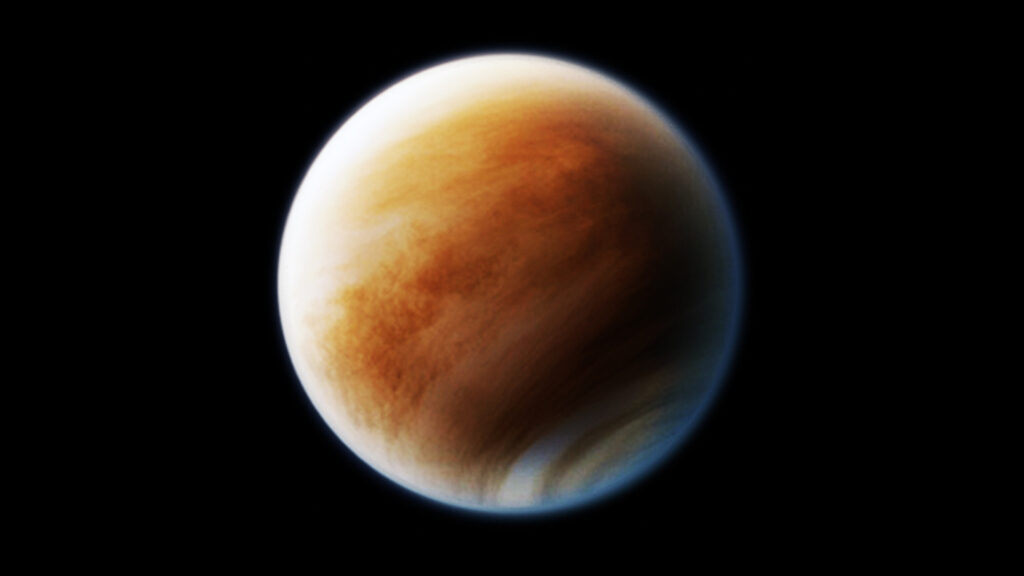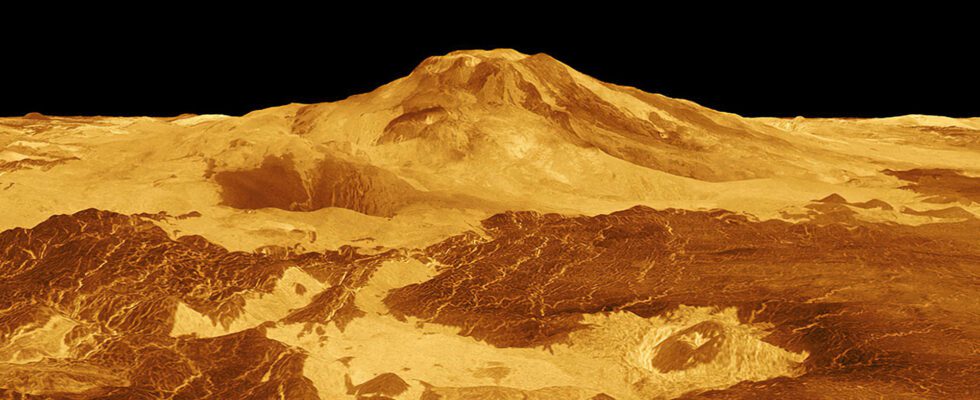Analysis of images of the surface of Venus taken in the early 1990s show that volcanoes are still active on the planet. An eruption took place 30 years ago.
Dead and sorry, Venus? The latest scientific work shows rather the opposite: the planet is experiencing some activity on the surface, due to volcanoes that are by no means extinct. It’s about a ” major discovery », according to Paul ByrneAssociate Professor of Earth and Planetary Sciences at Washington University in St. Louis.
The announcement of active volcanism on the second planet in the solar system was made on March 15, 2023, during the 54th annual conference on Lunar and Planetary Sciences, in the United States. It was accompanied by the publication in the journal Science of a study entitled ” Surface changes observed on a Venusian volcano during the Magellan mission “.
A deduction from images of Venus taken 30 years ago
This is the other remarkable element of these discoveries. Today there are no active space probes around the terrestrial planet, which is about 108 million km from the Sun. If vessels have passed through the area lately (such as BepiColombo, which is targeting Mercury, or Parker, which is interested in our star), there is nothing there.
It is therefore on the basis of an old mission that the work carried out by Robert Herrick and Scott Hensley rested. The American probe Magellan was sent in 1989 to Venus – sometimes referred to as Earth’s “twin sister”, including by NASA, even if the analogy is discussed – to orbit Venus for a few years.
On site in 1990, Magellan then embarked on a major mission: to carry out the complete mapping of the Venusian surface. This work caused the US space agency to say that Magellan ” was one of the most successful deep space missions “. Magellan will send out its last signal in October 1994, after being hurled into the planet’s atmosphere.
It is by exploiting elements that are thirty years old that the two researchers were able to determine the existence of active volcanoes. Luck also played a bit: Robert Herrick and Scott Hensley plunged back into the Magellan data, when they learned of NASA’s next Venusian mission with Veritas, three decades later.
” I didn’t really expect to succeedsays Robert Herrick in the pages of the American space agency, but after about 200 hours of manually comparing images from Magellan’s different orbits, I saw two images of the same region taken eight months apart showing telltale geological changes caused by an eruption. »
Growing suspicions of recent volcanic activity
The presence of volcanoes on Venus has been known for a long time, but there was no certainty about recent eruptions. In 2015, the European Space Agency’s Venus Express mission revealed lava flows on the surface. Nevertheless, scientists had failed to estimate the age of these volcanoes and contrails.
Studies have followed one another, each time confirming the track of recent volcanic activity. Lava flows ” no more than a few years old “, it was claimed in 2020. “ New evidence of recent tectonic and magmatic activity on the surface of Venus said another study from the same year. In 2021, same story.
” Only a few simulations match the images, and the most likely scenario is that volcanic activity occurred on the surface of Venus during Magellan’s mission. “, continues Scott Hensley. ” Although this is only a single data point for an entire planet, it confirms the existence of modern geological activity. »

These bundles of clues, obviously, did not allow us to be as affirmative as NASA is today. ” Direct geological evidence of recent volcanic activity has been observed for the first time on the surface of Venus “says the American space agency. It was necessary at least that so that the ” major discovery on Venus is indeed sizeable.
These works devoted to the volcanic activity of the planet are all arguments in favor of future missions to the “twin sister” of the Earth. In fact, in addition to Veritas (radar surface scanning and composition analysis), two other projects are on the program: DaVinci+ (atmosphere analysis) and EnVision, a European program.
Although relatively close to Earth, Venus remains mysterious. It is impossible to observe it in detail from the blue planet. In question, a thick cloudy layer, very opaque and above all very hostile. The clouds are loaded with sulfuric acid. Therefore, optical analysis is impossible at altitude; you have to use radar.
On the ground, its conditions are just as appalling: 465 ° C on the surface (Venus is the hottest planet in the solar system, more than Mercury, yet closer), with crushing pressure (around 90 times that of Earth , at sea level). In short, if Venus is the twin sister of the Earth, it has gone really bad.
Subscribe to Numerama on Google News to not miss any news!
